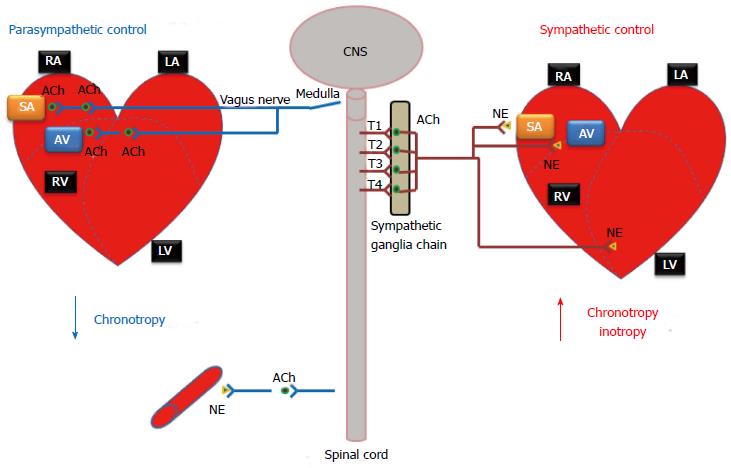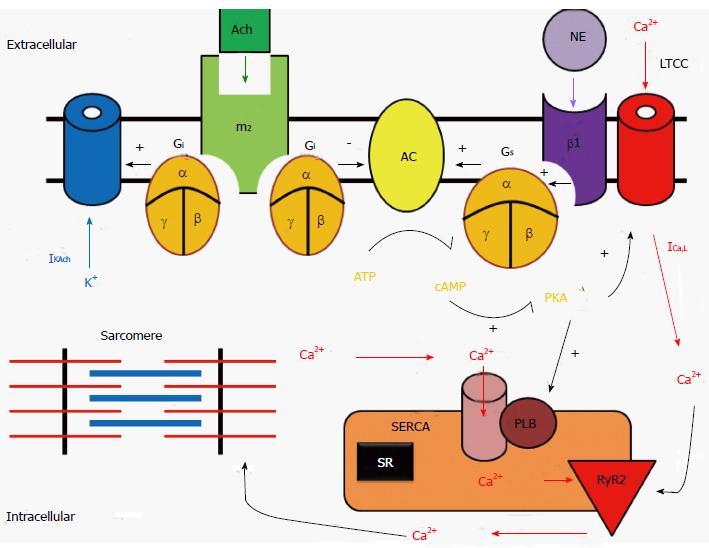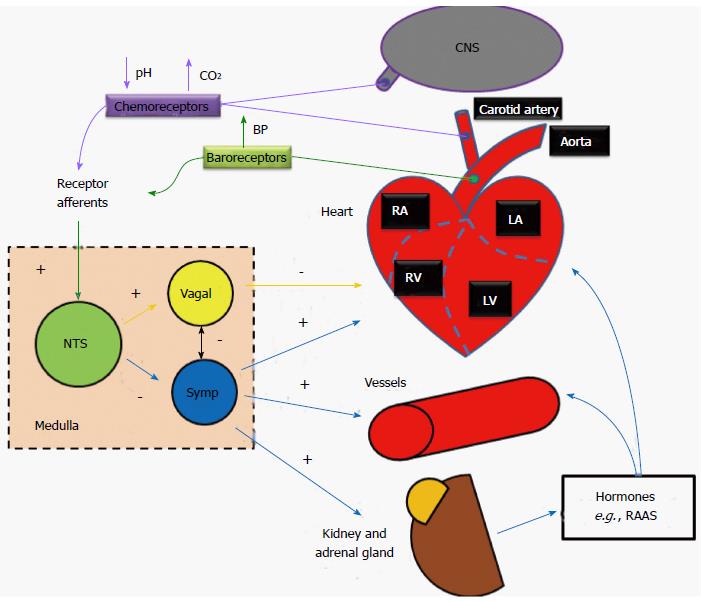Copyright
©The Author(s) 2015.
World J Cardiol. Apr 26, 2015; 7(4): 204-214
Published online Apr 26, 2015. doi: 10.4330/wjc.v7.i4.204
Published online Apr 26, 2015. doi: 10.4330/wjc.v7.i4.204
Figure 1 Autonomic nervous system regulation of the heart function.
The autonomic nervous system affects the rate and force of heart contractions. CNS: Central nervous system; RA: Right atria; LA: Left atria; RV: Right ventricle; LV: Left ventricle; SA: Sino-atrial node; AV: Atrioventricular node; NE: Norepinephrine; ACh: Acetylcholine.
Figure 2 Signal transduction systems for β-adrenergic receptor and muscarinic-receptor stimulations in a cardiac myocyte.
NE: Norepinephrine; β1: Beta1-adrenergic receptor; Gs: Stimulatory G-protein: Ach: Acetylcholine; m2: Type-2 muscarinic receptors; Gi: Inhibitory G-protein; AC: Adenylate cyclase; PKA: Protein kinase A; ICa,L: L-type Ca channel; RyR2: Ryanodine receptor 2; SERCA: Sarcoplasmic reticulum Ca2+-ATPase2a; PLB: Phospholamban.
Figure 3 Schematic of cardiovascular reflexes and their influences on heart and vessels functions.
NTS: Nucleus tractussolitarii; Symp: Sympathetic; CNS: Central nervous system; RAAS: Renin-angiotensin-aldosterone system.
Math 4 Math(A1).
- Citation: Gordan R, Gwathmey JK, Xie LH. Autonomic and endocrine control of cardiovascular function. World J Cardiol 2015; 7(4): 204-214
- URL: https://www.wjgnet.com/1949-8462/full/v7/i4/204.htm
- DOI: https://dx.doi.org/10.4330/wjc.v7.i4.204












